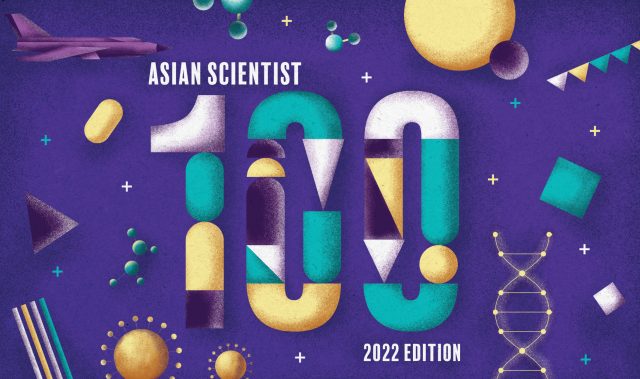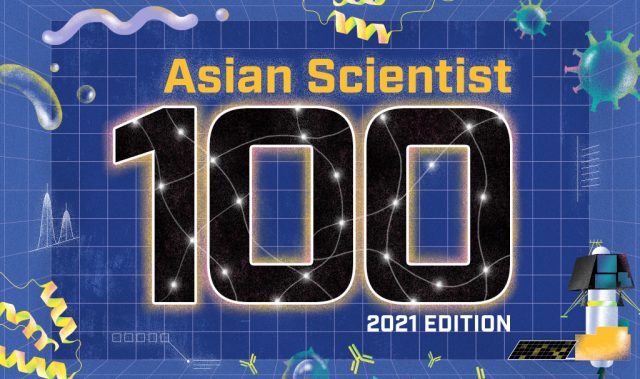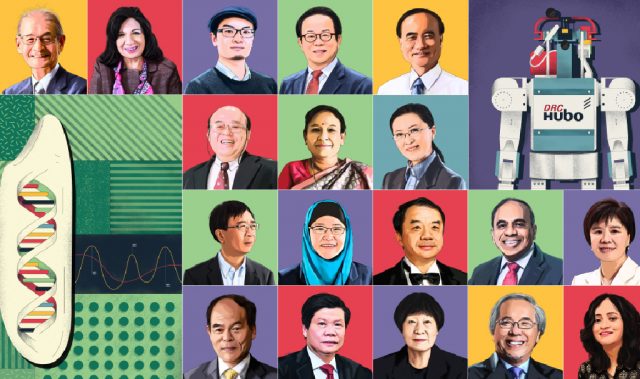
![]()

AsianScientist (Jun. 13, 2011) – A pioneer in AIDS research for three decades, Professor David Ho (何大一) is the scientific director and CEO of the Aaron Diamond AIDS Research Center and the Irene Diamond Professor at the Rockefeller University in New York. Dr. Ho is pursuing multiple vaccine strategies, including two candidates that have been advanced into clinical trials.
Dr. Ho has witnessed some of the earliest documented cases of AIDS, and since then, he has published 400 scientific papers on HIV/AIDS. Dr. Ho’s work has led to the development of highly active anti-retroviral therapy (HAART) to treat AIDS.
For his contributions to AIDS research, Dr. Ho was named Time magazine’s 1996 Man of the Year and presented with the Presidential Citizens Medal by former US President Bill Clinton in 2001. He is the recipient of 12 honorary doctorates, including those from Columbia and Tsinghua University.
In an interview with Asian Scientist Magazine, Dr. Ho talks about his role as a scientific bridge between US and China, his research on HIV vaccines, and his thoughts on R&D in Asia.
HIV was not a well-defined field when you began as a researcher. What got you started in HIV research in the first place?
I happened to be in the right place at the right time. During my chief residency year in 1981, I encountered a number of patients who presented with opportunistic infections suggesting that their immune system was impaired. It was a mystifying syndrome to doctors and scientists alike.
As it turned out, these were the earliest cases of AIDS described in Los Angeles by the Center for Disease Control and Prevention (CDC). Despite being an oddity at the time, I was sufficiently interested in this new disease because I felt it was important to understand how a transmissible agent could induce immunodeficiency.
My interest was entirely scientific at the outset, and little did I know that this rare syndrome would turn into a global pandemic.
As the head of the China AIDS Initiative and member of the Committee of 100, you work with both American and Chinese leaders. What are your greatest challenges being a scientific bridge between American and Chinese medical research?
My training has been entirely American, while culturally I am a large part Chinese.
Consequently, I am not used to the scientific culture in China, where Confucianism still plays a prominent role. While it is important to be respectful to teachers (elders), it is also important to constantly question in science. In this regard, the scientific culture should be improved in China by becoming more American.
I have learned a lot about China over the past 10 years of continually traveling throughout the country, and I now could begin to serve as a cultural and scientific bridge between the two countries, and to help both find common ground.
Do you think the system of funding for scientific research in China and Taiwan compares favorably to the US?
Sadly, the American funding for science has been rather poor over the past 5-10 years, especially since the financial crisis.
Chinese support for science and technology has been growing in a remarkable way, coupled with it tremendous economic rise.
China still has a long way to go to catch up with US support for science, but its advance is certainly notable. Taiwan is doing okay in its support for science but its small size limits its global impact. Hong Kong is rich but is extremely disappointing in its low-level investment in science and technology. There everything plays second fiddle to money.
Citing a recent Lancet study, do you think that the cost of government funded HAART could be justified purely on an economic basis, similar to tuberculosis treatments?
There is no question that good treatment is not only right medically and ethically, but also smart financially.
Ibalizumab, developed by your Ho Ibalizumab Development Consortium together with TaiMed Biologics is getting a lot of press as one of the most intelligent approaches to block HIV entry to CD4 cells and protect patients from HIV infection.
Could you share with Asian Scientist Magazine how this research is progressing?
The Gates Foundation has been supporting our effort to advance the current version of ibalizumab toward a proof-of-concept study in HIV prevention.
As you know, there is no effective HIV vaccine, and one is not expected for the foreseeable future. Therefore, alternative strategies such as using a monoclonal antibody like ibalizumab in a passive way have gained traction in the field. You could say ibalizumab is the leading antibody in this regard.
We have already laid out plans to conduct a phase 2a study next year, followed by a more definitive efficacy study (2b) in 2013.
Furthermore, my team is working hard to make a better second-generation ibalizumab by improving its potency by at least two orders of magnitude and to by enhancing its pharmacokinetic profile by ten-fold. We are more optimistic about this type of passive antibody efforts in preventing HIV infection than traditional vaccine approaches.
Ibaluzimab is delivered subcutaneously or intravenously. Do you envision a delivery mechanism to allow the third world to benefit from this type of monoclonal immunotherapy?
Yes, improving the potency and pharmacokinetics will lower the dose requirement substantially and therefore the cost.
However, for the developing world, more is needed. We are exploring the use of gene transfer methods to administer the gene encoding the protective antibody and thereby allowing the body to manufacture the desired product. This approach is still in its infancy but early experimental results suggest that the approach is feasible.
The stigma of HIV infection is less than it used to be, although HIV patients have been denied medical treatment for unrelated ailments because of their condition. How can we continue to de-stigmatize HIV infection in Asia?
Continue to educate. Stigma and discrimination are the outcome of ignorance about the virus, disease, and the mode of transmission.
Worldwide, stigma diminishes as knowledge level rises.
HAART has been revolutionary in helping to achieve a remarkable drop in transmission rates of HIV around the world. Looking into the future, what exactly do you think it would take to rid the world of HIV infection in humans?
Here, we really need a breakthrough in order to think about curing HIV infection in any infected person. Fundamentally, the virus is integrated into the host genome. Thus, we need to come up with a way to specifically eliminating the integrated provirus from infected cells. Our current level of technology is not sufficient to do the job.
What is your favorite quote and how does this quote influence your everyday thoughts, decisions and actions?
A Japanese proverb: “Vision without action is a dream; action without vision is a nightmare.”
I think this is so true in every aspect of life, especially in confronting tough problems that require years of dedication and hard work.
Read more about Dr. Ho’s research:
Collaboration for AIDS Vaccine Delivery (Ho Ibalizumab Development Consortium).
Aaron Diamond AIDS Research Center.
China AIDS Initiative.
——
Copyright: Asian Scientist Magazine. Images and supporting information: ADARC.
Disclaimer: This article does not necessarily reflect the views of AsianScientist or its staff.











